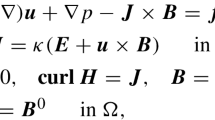Abstract
An improved expansion of the parabolized stability equation (iEPSE) method is proposed for the accurate linear instability prediction in boundary layers. It is a local eigenvalue problem, and the streamwise wavenumber α and its streamwise gradient dα/dx are unknown variables. This eigenvalue problem is solved for the eigenvalue dα/dx with an initial α, and the correction of α is performed with the conservation relation used in the PSE. The iEPSE is validated in several compressible and incompressible boundary layers. The computational results show that the prediction accuracy of the iEPSE is significantly higher than that of the ESPE, and it is in excellent agreement with the PSE which is regarded as the baseline for comparison. In addition, the unphysical multiple eigenmode problem in the EPSE is solved by using the iEPSE. As a local non-parallel stability analysis tool, the iEPSE has great potential application in the eN transition prediction in general three-dimensional boundary layers.
Similar content being viewed by others
References
ARNAL, D. Boundary layer transition: predictions based on linear theory. Special Course on Progress in Transition Modelling, Agard Lab, Toulouse (1994)
ORR, W. M. F. The stability or instability of the steady motions of a perfect liquid and of a viscous liquid, part I: a perfect liquid. Proceedings of the Royal Irish Academy, Section A: Mathematical and Physical Sciences, 27, 9–68 (1907)
HERBERT, T. Parabolized stability equations. Annual Review of Fluid Mechanics, 29, 245–283 (1997)
SARIC, W. S. and NAYFEH, A. H. Nonparallel stability of boundary layer flows. Physics of Fluids, 18, 945–950 (1975)
GASTER, M. On the effects of boundary-layer growth on flow stability. Journal of Fluid Mechanics, 66, 465–480 (1974)
GASTER, M. On the growth of waves in boundary layers: a non-parallel correction. Journal of Fluid Mechanics, 424, 367–377 (2000)
BERTOLOTTI, F. P. and HERBERT, T. Analysis of the linear stability of compressible boundary layers using the PSE. Theoretical and Computational Fluid Dynamics, 3, 117–124 (1991)
CHANG, C. L., MALIK, M. R., and HUSSAINI, M. Y. Compressible stability of growing boundary layers using parabolized equations. 22nd Fluid Dynamics, Plasma Dynamics and Lasers Conference, American Institute of Aeronautics and Astronautics, Reston (1991)
ZHANG, Y. M. and ZHOU, H. Verification of parabolized stability equations for its application to compressible boundary layers. Applied Mathematics and Mechanics (English Edition), 28(8), 987–998 (2007) http://doi.org/10.1007/s10483-007-0801-3
WANG, M., HERBERT, T., and STUCKERT, G. Crossflow-induced transition in compressible swept-wing flows. 25th AIAA, Fluid Dynamics Conference, American Institute of Aeronautics and Astronautics, Reston (1994)
CHANG, C. L. Langley Stability and Transition Analysis Code (LASTRAC) Version 1.2 User Manual, NASA TM 213233, NASA Langley Research Center, Langley (2004)
HUANG, Z. F. and WU, X. S. A non-perturbative approach to spatial instability of weakly nonparallel shear flows. Physics of Fluids, 27, 054102 (2015)
YU, G. T., GAO, J., and LUO, J. S. Stability analysis method considering non-parallelism: EPSE method and its application. Applied Mathematics and Mechanics (English Edition), 37(1), 27–36 (2016) http://doi.org/10.1007/s10483-016-2013-9
LU, X. Z. and LUO, J. S. Applications of EPSE method for predicting crossflow instability in swept-wing boundary layers. Applied Mathematics and Mechanics (English Edition), 38(7), 981–996 (2017) http://doi.org/10.1007/s10483-017-2214-6
MALIK, M. R., LI, F., and CHANG, C. L. Crossflow disturbances in three-dimensional boundary layers: nonlinear development, wave interaction and secondary instability. Journal of Fluid Mechanics, 268, 1–36 (1994)
HAYNES, T. S. and REED, H. L. Computations in nonlinear saturation of stationary crossflow vortices in a swept-wing boundary layer. AIAA Paper, 96, 0182 (1996)
KARA, K., BALAKUMAR, P., and KANDIL, O. Effects of nose bluntness on stability of hypersonic boundary layers over a blunt cone. 37th AIAA Fluid Dynamics Conference and Exhibit, 4492 (2007)
Acknowledgements
The authors would like to thank Xuezhi LU and Zhenrong JING for valuable discussion and for providing some of the DNS data.
Author information
Authors and Affiliations
Corresponding author
Additional information
Project supported by the National Natural Science Foundation of China (Nos. 11332007, 11402167, 11672205, and 11732011) and the National Key Research and Development Program of China (No. 2016YFA0401200)
Rights and permissions
About this article
Cite this article
Han, Y., Liu, J. & Luo, J. Improvement for expansion of parabolized stability equation method in boundary layer stability analysis. Appl. Math. Mech.-Engl. Ed. 39, 1737–1754 (2018). https://doi.org/10.1007/s10483-019-2401-9
Received:
Revised:
Published:
Issue Date:
DOI: https://doi.org/10.1007/s10483-019-2401-9




